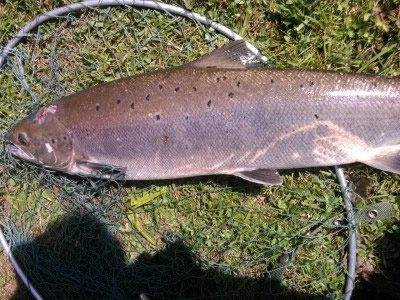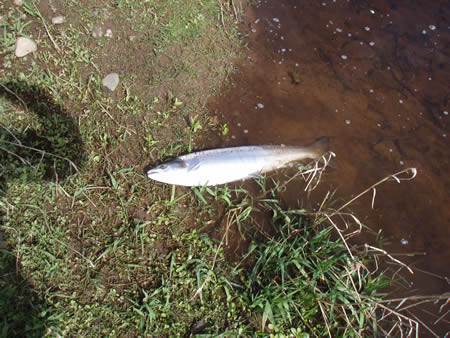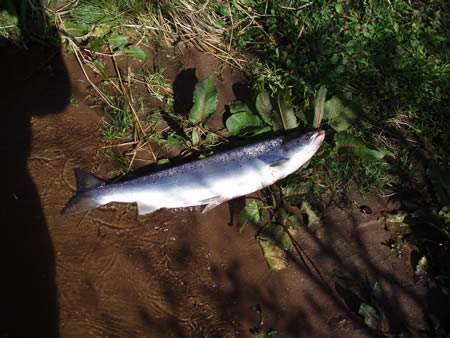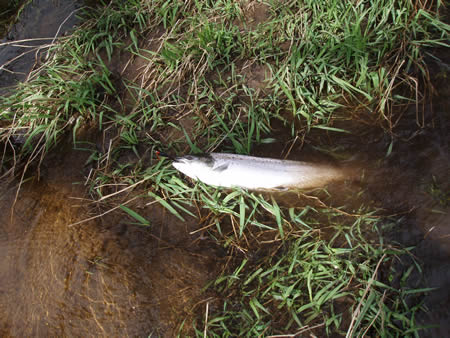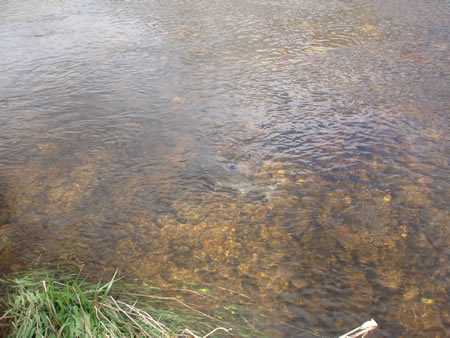These bulletin blogs represent news about Finavon and the South Esk, and my views as a riparian owner. They are not the views of any other organisation, nor are they designed to promote the interests of any individual or organisation other than Finavon Castle Water and factors affecting the fishery. Tony Andrews
1035 Bill Hay, a long-time fisherman at Finavon and friend of the late Cyril Butler (See November & December 2011 blogs on catches), started May with a 12lbs salmon, which had been in the river a while and appeared to be recvovering from head lesions, from Frank’s Stream (Indies Beat)
1046 Eleven minutes later Derek had a 9lbs fish from Tyndals (Milton Beat) on a Willie Gunn.
This salmon was the first of two nine pounders that Derek caught in Tyndals on a bright and warm May morning. Both were caught on size 8 Willie Gunns (1″)
It is no coincidence that these fish were caught in the best conditions we have had for at least a week. The air temperature is up, the water clear and the level slowly dropping after the spate of Monday evening and, as I suspected despite rather negative signals from downriver, there are (fresh) fish in the river.
1131 Another 9lbs fresh fish from Tyndals (Milton Beat).
The fact that Derek caught an 18lbs sea-liced salmon and a 14lbs salmon at Kintrockat on Monday evening supports my view that fish have been running through the lower river, but have kept their heads down and therefore not been seen by fishers. I suppose the moral of the story is “Don’t believe what you haven’t seen”!
Late report after dark on 2 May. This evening I fished Tyndals Pool (Milton Beat) through as dusk was falling and a fresh salmon showed about 10 metres downstream of the ‘elbow’. I continued on down the pool as the bats started to fly and the colours seeped away from the foliage. Having fished down to the second south bank groyne I decided to wade quietly back to the top of the pool, and soon afterwards was covering the place where the salmon had shown. I could see the fall of the line and the splash of the fly against the fading light. The fly was swinging very nicely over the main lie just upstream of the big boulder in the centre of the stream, when the line drew away nicely, and after a few minutes of mayhem in the gathering gloom, I landed a silver salmon of about 11lbs. A lovely fish that swam off strongly into the night!
TA
